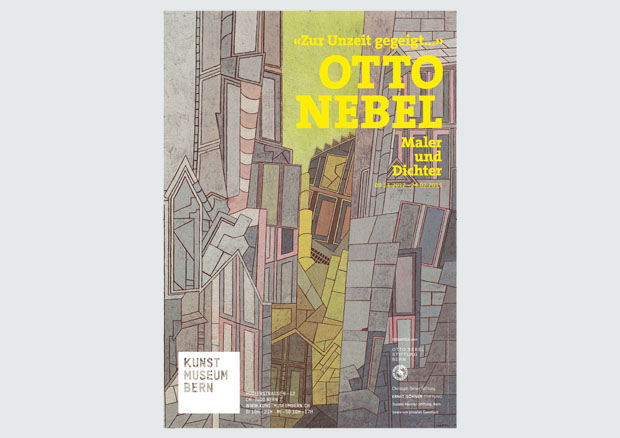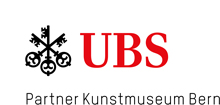«Zur Unzeit gegeigt...». Otto Nebel, painter and poet, 09.11.2012 – 24.02.2013
Multifaceted Word and Visual Artist
The Kunstmuseum Bern is presenting a large overview exhibition of Otto Nebel’s visual and literary oeuvre. Born in Berlin in 1882 and died in 1973, Otto Nebel emigrated to Bern in 1933 where he pursued his multifaceted artistic activities. Additionally the poet and painter worked as an actor and narrator. The exhibition concentrates on the interdependencies between Nebel’s visual and literary forms of representation — like many of the early 20th-century avant-garde, he experimented in both media.
Commemorating Otto Nebel’s 120th birthday, the exhibition gives the opportunity of rediscovering this intriguing artist and his intermedial approach to the arts. The thematic lens of the Otto Nebel retrospective is on the interdependencies between his literary texts and his visual forms of representation in the media of painting, drawings, prints, and collages — that is, on word/script and image. We are presenting Otto Nebel’s key works according to individual stations in his biography.
A spotlight on experience and emotion
The horrors on the war front and his subsequent experiences as a prisoner of war of the English during the First World War left deep scars on the artist. On returning to Berlin, Otto Nebel joined forces with the expressionist movement and Herwarth Walden, who provided an influential forum for avant-garde approaches to art, literature, and music with his Der Sturm Gallery and journal with the same name. Walden’s activities greatly facilitated the breakthrough of expressionism. Nebel stood out in these circles as a word artist. He composed both texts and his first linocuts
for the publications of Der Sturm. Already early Nebel’s work blatantly pursued non-representational approaches painting with a priority on expressing experience and emotion. The notion that the revolution of modern art could also lead to the desired transformation of society established a link between Otto Nebel and other avant-garde artists.
Restricted to essentials
In the 1920s Nebel executed his first runic fugues — that is, poems that constituted a restricted number of characters. Due to his education and training as a construction expert, Nebel was not only fascinated by the construction of Gothic cathedrals, but likewise took up the systematic investigation of colors and geometrical surfaces. Among the momentous experiences in his life were his sojourns in Italy. It was here that Nebel compiled, in 1931, his Farben-Atlas von Italien (Italian color atlas), which was to influence much of his work. After his emigration to Bern in 1933, Nebel’s art grew increasingly non-representational, and he began to create a visual language of signs that he called “Runenbilder” (runic pictures). Moreover, the work of Franz Marc as well as the friendship with Wassily Kandinsky and Paul Klee greatly influenced him.
In 1969 Otto Nebel made a gift of some 200 artworks to the Kunstmuseum Bern. After his decease in 1973, the artist’s estate became part of the Otto Nebel Foundation with its headquarters in Bern. The Foundation boasts over 2000 paintings, 4000 drawings, many hundreds of linocuts, a few collages and mosaics as well as an extensive collection of literary documents and correspondence. The writings in his estate were recently handed over to the Swiss Literary Archives.
Contact: Brigit Bucher, , Tel.: +41 31 328 09 21
Images: Marie Louise Suter, , Tel.: +41 31 328 09 53


